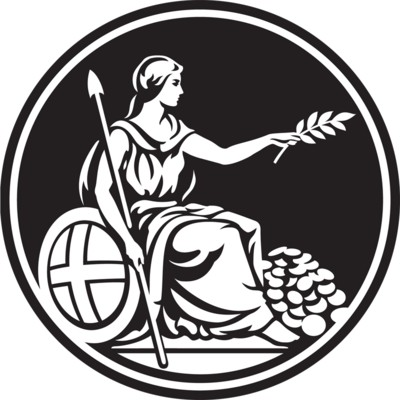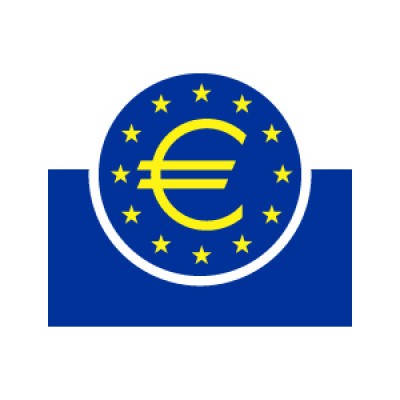Navigating Economic Currents: The UK’s Struggle for Growth Amidst Inflationary Pressures
July 1, 2025, 4:13 pm

Location: United Kingdom, England, London
Employees: 1001-5000
Founded date: 1694
The UK economy is at a crossroads. The Bank of England (BoE) is signaling a gradual decline in interest rates, aiming to foster growth while grappling with persistent inflation. Governor Andrew Bailey's recent remarks underscore the delicate balance between taming inflation and stimulating economic activity. As the central bank prepares for a potential rate cut in August, the question looms: will this be enough to revive the sluggish economy?
The backdrop is complex. Inflation, currently at 3.4%, remains stubbornly above the BoE's target of 2%. This gap creates a challenging environment for policymakers. Bailey’s cautious optimism suggests that inflationary pressures may be easing, yet the path forward is fraught with uncertainty. The UK economy shrank sharply in April, a stark reminder of the headwinds it faces. Global trade tariffs and new domestic tax increases have compounded the challenges, leaving growth elusive.
Finance Minister Rachel Reeves has expressed disappointment over the latest growth data. Her government’s fiscal strategy, which includes tax increases to fund public spending, is under scrutiny. The Office for Budget Responsibility has forecasted a meager 1% growth for the year, a stark contrast to the ambitious targets set earlier. Reeves acknowledges the need for action, but options are limited. The government can either cut public spending, increase borrowing, or raise taxes further. Economists suggest that raising taxes is the most viable path, given the commitments already made.
Bailey’s comments on fiscal policy reveal a nuanced understanding of the interplay between monetary and fiscal strategies. While he emphasizes the importance of a robust fiscal framework, he also advocates for flexibility. This flexibility is crucial as the government navigates a landscape marked by higher debt interest payments and weaker-than-expected tax receipts. The need for adaptability is clear; rigid policies may stifle growth when the economy needs a boost.
Across the English Channel, the European Central Bank (ECB) faces its own set of challenges. President Christine Lagarde has highlighted the unpredictability of inflation, exacerbated by frequent economic shocks. The ECB has managed to bring inflation down to 1.9%, allowing for a reduction in benchmark interest rates from 4% to 2%. However, the threat of higher tariffs from the U.S. adds another layer of uncertainty. The ongoing negotiations for a trade deal with the U.S. are critical, as they could significantly impact growth and inflation across Europe.
The recent conference in Sintra, Portugal, where central bankers and economists convened, serves as a reminder of the interconnectedness of global economies. The discussions there echo the sentiments of many: the need for a cautious yet proactive approach to monetary policy. The interplay between the BoE and the ECB is particularly relevant, as both institutions grapple with similar inflationary pressures and growth challenges.
As the UK prepares for its next monetary policy meeting, the stakes are high. A 25 basis point cut could provide a much-needed lifeline to businesses and consumers alike. However, the effectiveness of such a move hinges on the broader economic context. If inflation remains stubbornly high, the central bank may find itself in a precarious position, forced to choose between curbing inflation and stimulating growth.
The road ahead is fraught with obstacles. The UK government’s fiscal rules, designed to ensure stability, may inadvertently limit its ability to respond to economic challenges. The delicate balance between fiscal responsibility and economic growth is a tightrope walk. As Bailey and Reeves navigate these turbulent waters, their decisions will have far-reaching implications for the UK economy.
In conclusion, the UK’s economic landscape is a complex tapestry woven with threads of inflation, growth, and fiscal policy. The BoE’s gradual approach to interest rates reflects a desire to foster stability while addressing inflationary concerns. However, the path to recovery is uncertain. As the government grapples with its fiscal strategy, the interplay between monetary and fiscal policies will be crucial. The coming months will reveal whether the UK can find its footing amidst these economic currents or if it will continue to drift in a sea of uncertainty. The stakes are high, and the world is watching.
The backdrop is complex. Inflation, currently at 3.4%, remains stubbornly above the BoE's target of 2%. This gap creates a challenging environment for policymakers. Bailey’s cautious optimism suggests that inflationary pressures may be easing, yet the path forward is fraught with uncertainty. The UK economy shrank sharply in April, a stark reminder of the headwinds it faces. Global trade tariffs and new domestic tax increases have compounded the challenges, leaving growth elusive.
Finance Minister Rachel Reeves has expressed disappointment over the latest growth data. Her government’s fiscal strategy, which includes tax increases to fund public spending, is under scrutiny. The Office for Budget Responsibility has forecasted a meager 1% growth for the year, a stark contrast to the ambitious targets set earlier. Reeves acknowledges the need for action, but options are limited. The government can either cut public spending, increase borrowing, or raise taxes further. Economists suggest that raising taxes is the most viable path, given the commitments already made.
Bailey’s comments on fiscal policy reveal a nuanced understanding of the interplay between monetary and fiscal strategies. While he emphasizes the importance of a robust fiscal framework, he also advocates for flexibility. This flexibility is crucial as the government navigates a landscape marked by higher debt interest payments and weaker-than-expected tax receipts. The need for adaptability is clear; rigid policies may stifle growth when the economy needs a boost.
Across the English Channel, the European Central Bank (ECB) faces its own set of challenges. President Christine Lagarde has highlighted the unpredictability of inflation, exacerbated by frequent economic shocks. The ECB has managed to bring inflation down to 1.9%, allowing for a reduction in benchmark interest rates from 4% to 2%. However, the threat of higher tariffs from the U.S. adds another layer of uncertainty. The ongoing negotiations for a trade deal with the U.S. are critical, as they could significantly impact growth and inflation across Europe.
The recent conference in Sintra, Portugal, where central bankers and economists convened, serves as a reminder of the interconnectedness of global economies. The discussions there echo the sentiments of many: the need for a cautious yet proactive approach to monetary policy. The interplay between the BoE and the ECB is particularly relevant, as both institutions grapple with similar inflationary pressures and growth challenges.
As the UK prepares for its next monetary policy meeting, the stakes are high. A 25 basis point cut could provide a much-needed lifeline to businesses and consumers alike. However, the effectiveness of such a move hinges on the broader economic context. If inflation remains stubbornly high, the central bank may find itself in a precarious position, forced to choose between curbing inflation and stimulating growth.
The road ahead is fraught with obstacles. The UK government’s fiscal rules, designed to ensure stability, may inadvertently limit its ability to respond to economic challenges. The delicate balance between fiscal responsibility and economic growth is a tightrope walk. As Bailey and Reeves navigate these turbulent waters, their decisions will have far-reaching implications for the UK economy.
In conclusion, the UK’s economic landscape is a complex tapestry woven with threads of inflation, growth, and fiscal policy. The BoE’s gradual approach to interest rates reflects a desire to foster stability while addressing inflationary concerns. However, the path to recovery is uncertain. As the government grapples with its fiscal strategy, the interplay between monetary and fiscal policies will be crucial. The coming months will reveal whether the UK can find its footing amidst these economic currents or if it will continue to drift in a sea of uncertainty. The stakes are high, and the world is watching.
